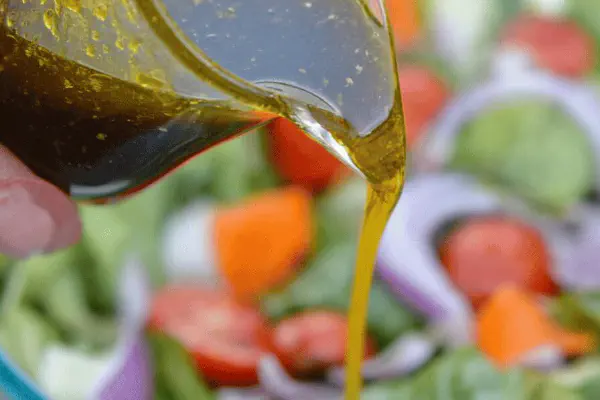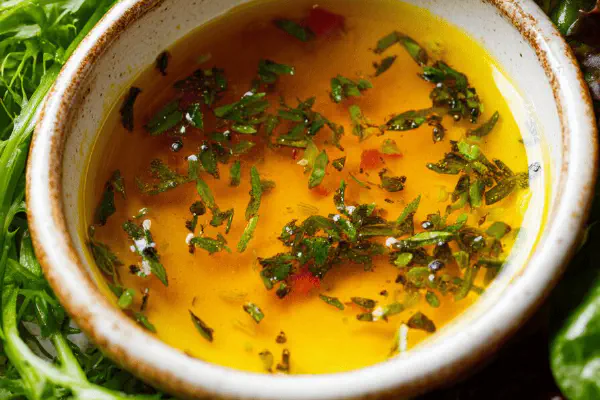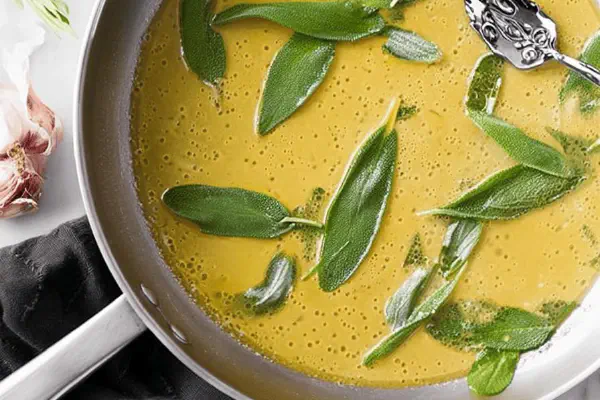Garlic Balsamic Vinaigrette Twist

By Emma
Certified Culinary Professional
Ingredients
- 4 garlic cloves fine pulsed or microplaned
- ⅓ cup aged balsamic vinegar
- ½ cup avocado oil substitute for olive oil
- 1 tablespoon pure maple syrup replaces honey
- 1 teaspoon Dijon mustard new kick
- Salt pinch to taste
- Freshly ground black pepper pinch
About the ingredients
Method
Garlic prep
- Use a microplane or small food processor. Pulverize garlic until it becomes a juicy pulp — look for a pasty texture with some moisture visible, not big chunks. The release of garlic juice intensifies flavor and prevents harsh bites in final dressing. No chunk bombs allowed.
Combine and shake
- Add garlic pulp, balsamic, avocado oil, maple syrup, Dijon, salt, and pepper into an airtight jar or container. Seal tight, shake hard and fast. Vigorously. That mild fizz, oily sheen forms as oil and vinegar mix. No foil, plastic or leaky lids. You want a nice emulsion, not just separated layers.
Flavor meld
- Serve right away if impatient. But wait for 15 - 20 minutes to let flavors marry fully. Garlic mellows. Balsamic’s deeper notes bloom, maple syrup sweetness rounds acidity. Gives a quieter but richer punch instead of harsh vinegar slap. Stir or shake before use - oil settles on top.
Troubleshooting and storage
- If dressing separates, shake again vigorously. Emulsion breaks easily if oil too cold or jar loose. Substitute avocado oil with light olive oil for affordability and availability. Maple syrup swapped with a mild agave syrup or brown sugar if needed. Store refrigerated up to a week in airtight container. Let stand at room temperature to soften oil if thickened by cold.
Cooking tips
Chef's notes
- 💡 Garlic texture key. Microplane or processor but watch pulp consistency. Wants moisture, pasty not chunky. Big chunks slam sharp flavors unexpectedly. Garlic juice releases oils that mellow over time. Timing matters. Rest after mixing to soften bite. If fresh garlic too harsh, let sit 15+ mins.
- 💡 Emulsion needs strong shake in sealed jar. Not slow stir. Fast, hard shaking creates tiny oil droplets suspended in vinegar. Mild fizz and oily sheen signal done. Avoid foil lids, leaks kill texture. If layers separate, shake again. Temperature matters — cold oil resists blending, warms in jar before mixing.
- 💡 Avocado oil smooths mouthfeel, lighter than olive. Olive oil stronger flavor, can overpower delicate balsamic notes. In budget pinch, mild olive oil swap works but watch flavor balance. Maple syrup replaces honey with earthier sweetness — agave or brown sugar swap possible but taste shifts. Dijon mustard non-negotiable for stable emulsion and subtle bite.
- 💡 Resting vinaigrette essential. Flavors meld, sharp edges soften, aroma shifts from harsh garlic to mellow. Maple syrup rounds out acidity, balsamic deepens. Shake before serving; oil settles on top. Oil viscosity thickens in cold; bring to room temp to loosen. Store airtight in fridge; lasts about a week but best fresher.
- 💡 Common snag: emulsion breaks if oil too cold or jar lid loose. Quick fix: re-shake vigorously, warm oil slightly if needed. Avoid metal mixing bowls — acid + metal alters flavor. Glass or plastic containers best for storage/mixing. Garlic puree from jars can substitute but flavor duller, try fresh for livelier dressing.
Common questions
How finely to prepare garlic?
Paste like pulp best. Not chunks. Microplane or processor blitz till moist. Moisture key. Raw chunks hit harsh. Pulp releases oils that mellow overtime. Rest enhances aroma and softness.
What if vinaigrette separates fast?
Shake hard again. Temperature matters. Warm bottle in hand if cold. Dijon mustard helps bind; omit and it breaks quicker. Use airtight jar with tight lid. Metal reacts — avoid. If separation stays, whisk vigorously.
Can I substitute maple syrup?
Agave syrup or brown sugar work but change sweetness character. Maple adds earthier tone. Honey too floral, not ideal here. Adjust sugar quantity if substituting. Taste as you go, syrup balances acidity gently.
Best storage method?
Airtight container, fridge up to 7 days. Dressing thickens when cold — bring to room temp before serving. Avoid metal lids if acid exposed. Glass jar best. Shake before use; if thick, a quick warm bath softens oil.



